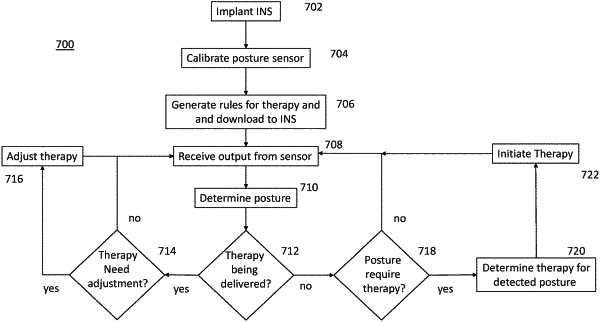| CPC A61N 1/3611 (2013.01) [A61B 5/0004 (2013.01); A61B 5/0015 (2013.01); A61B 5/0031 (2013.01); A61B 5/4818 (2013.01); A61B 5/7264 (2013.01); A61F 5/566 (2013.01); A61N 1/025 (2013.01); A61N 1/36003 (2013.01); A61N 1/3601 (2013.01); A61N 1/36078 (2013.01); A61N 1/36125 (2013.01); A61N 1/36139 (2013.01); A61N 1/37247 (2013.01); A61N 1/37252 (2013.01); A61B 5/024 (2013.01); A61B 5/1116 (2013.01); A61B 5/389 (2021.01); A61B 7/023 (2013.01); A61B 2562/0219 (2013.01); A61N 1/36175 (2013.01)] | 20 Claims |

|
1. An implantable neurostimulator (INS) comprising:
an electrical lead including one or more electrodes, wherein the electrical lead is configured for placement of the one or more electrodes proximate one or more protrusor muscles of a tongue of a patient;
a pulse generator electrically connected to the electrical lead and configured to deliver electrical energy to the one or more electrodes, the pulse generator having mounted therein a control circuit; and
a sensor configured to detect electromyography signals for the one or more protrusor muscles of the tongue of the patient and generate orientation signals representative of an orientation of the pulse generator,
wherein the control circuit is configured to:
determine the orientation of the pulse generator based on the orientation signals;
determine a fatigue of the one or more protrusor muscles based on the detected electromyography signals; and
cause delivery of electrical energy to the one or more electrodes based on the determined fatigue of the one or more protrusor muscles when the determined orientation correlates to a pre-determined orientation.
|